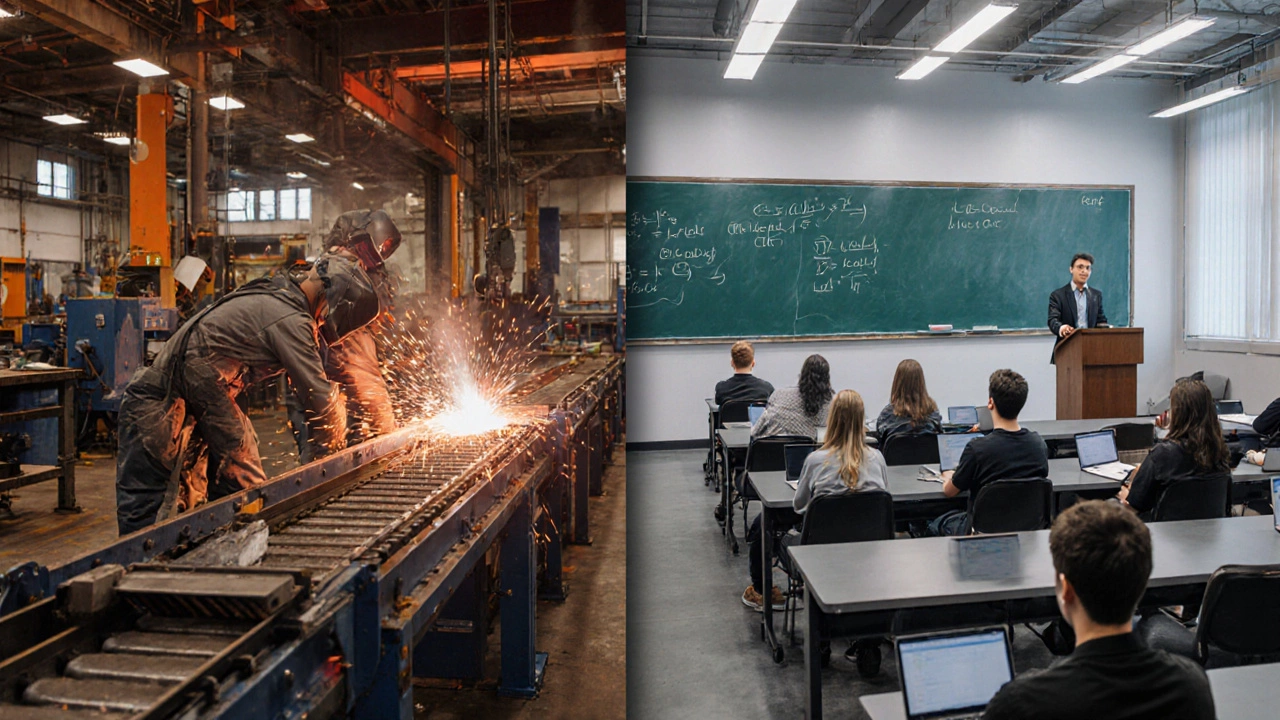Education Pathways: Mapping Your Learning and Career Journey
When navigating Education Pathways, the collection of routes you can take to acquire knowledge, skills, and credentials that lead to a profession or personal growth. Also known as learning routes, it helps you align studies with future goals. A solid Career Guidance system works hand‑in‑hand with these pathways, offering insight into job markets and required credentials. Pairing that with Skill Development programs ensures you pick up practical abilities that employers value. Meanwhile, Online Learning platforms expand access, letting you study anywhere, anytime. Finally, understanding Higher Education options—from diplomas to PhDs—rounds out the picture of what’s possible.
Why Understanding Education Pathways Matters
People often ask if a degree guarantees a job. The truth is Education Pathways are more than a single credential; they’re a series of decisions that shape earning potential, job satisfaction, and lifelong learning. For instance, a student who follows a clear career guidance plan can pinpoint emerging sectors—like data science or renewable energy—before they become saturated. Those same students benefit from skill development workshops that teach coding, communication, or project management, making the transition from classroom to workplace smoother. Online learning fills geography gaps, offering micro‑credentials that stack into a full degree later. In short, each component talks to the others, creating a flexible, future‑proof roadmap.
Let’s break down the key entities. Career Guidance often includes aptitude tests, industry mentorship, and labor‑market analytics. Its main attribute is relevance: it matches personal interests with market demand, and the value shows up as higher placement rates. Skill Development focuses on practical, transferable abilities. Typical attributes are hands‑on projects, certification outcomes, and employer endorsement. When you combine these two, the education pathway becomes a strategic plan rather than a guesswork list.
The digital shift made Online Learning a cornerstone of modern pathways. Its defining attributes are accessibility, scalability, and cost‑effectiveness. Platforms like Coursera, Udemy, and edX offer stacked certificates that can be counted toward university credit, linking directly to Higher Education. The latter’s attributes include program length, accreditation status, and research opportunities. Together, they form a loop: online courses feed into degree programs, and higher education validates the skills you’ve built online.
From a practical standpoint, you can treat an education pathway as a three‑step model: (1) define your career goal with guidance, (2) acquire the needed skills through focused development, and (3) validate and expand those skills via online or campus‑based higher education. This model reflects a semantic triple: Education Pathways requires Skill Development; Skill Development enables Online Learning; Online Learning feeds into Higher Education. Each link strengthens the next, reducing uncertainty and boosting confidence.
Real‑world examples illustrate the model. A recent engineering graduate used a career‑guidance app to spot a shortage in AI specialists, then completed an online nanodegree in machine learning, finally enrolling in a part‑time master’s program to earn a formal credential. The outcome? A 60% salary jump within a year. Stories like this show why mapping your education pathway matters more than chasing any single degree.
Below you’ll find a curated collection of articles that dive deeper into each of these pieces—city‑specific coaching for JEE, free coding roadmaps, MBA specialization trends, and more. Use them to sketch out your own route, compare options, and take action on the steps that matter most to you.
Vocational vs. Academic Education: Key Differences Explained
Discover the clear differences between vocational and academic education, their credentials, outcomes, and how to choose the right path for your career.
